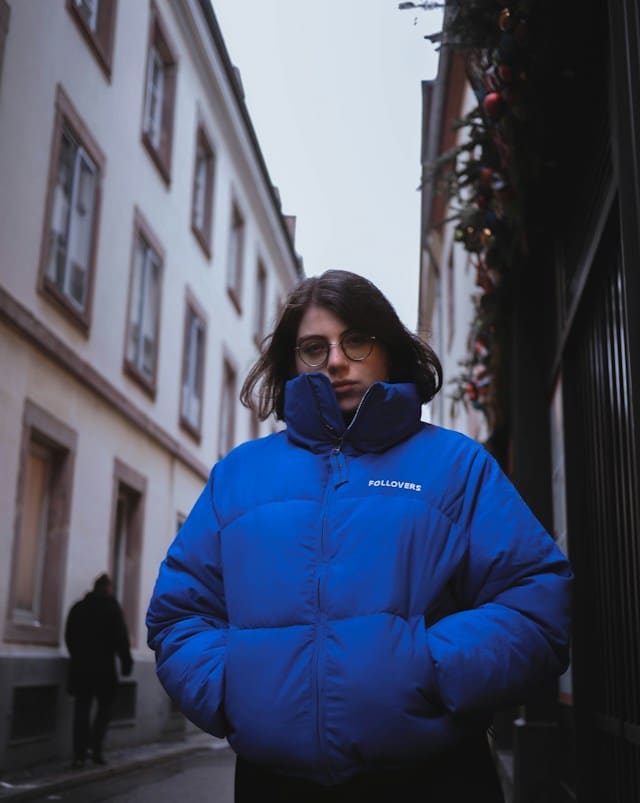The best tips for layering clothes during transitional weather

As the season shifts, so does the need for your wardrobe to adapt. You experience the end of summer’s heat and the onset of winter’s chill. The transitional weather of spring and fall can put a real challenge to your daily outfit choices. The question that pops up every time is – what to wear during this unpredictable weather? The answer lies in layering your clothes effectively. By understanding how to layer your clothes, you can navigate the seasonal transitions smoothly, maintaining your style quotient high and staying comfortable, regardless of the weather conditions.
Understanding The Art of Layering
Layering is more than just piling on clothes. It’s a strategic way to dress, making it easier to adjust to the fluctuating temperatures throughout the day. The key is to wear a combination of light and heavy outfits, which can be easily added or removed as the weather demands.
Dans le meme genre : How to choose the right overcoat for your winter wardrobe
Choosing fabrics that complement each other and do not cause discomfort is crucial. Natural fabrics like cotton, wool, and silk are great choices as they allow your skin to breathe, wick moisture away, and provide warmth when needed.
Starting with the Base Layer
The base layer is your first line of defense against the cold. It’s usually lightweight and snug, maintaining body heat and wicking away sweat. For this layer, you could wear a light cotton t-shirt or a thin long-sleeved top. On colder days, opt for thermal wear.
Sujet a lire : How to choose the perfect little white dress
Your base should be comfortable and non-restrictive. Try to avoid fabrics like polyester, which can cause sweating and discomfort. Cotton, on the other hand, is breathable and helps regulate body temperature, making it an excellent choice for the base layer.
Adding the Middle Layer
The middle layer is where you can showcase your style. This is the layer that people will see when you remove your outer layer. Sweaters, hoodies, cardigans, or vests are popular choices.
This layer’s purpose is to provide insulation and retain the heat your body produces. Depending on the weather, you can choose the thickness and fabric of this layer. For instance, a light sweater would work well during the early fall, while a heavy, chunky knit would be better suited for late fall or early winter.
Choosing the Outer Layer
As the name suggests, the outer layer is the top-most layer and will be the most visible. Its job is to protect you from external elements like wind, rain, snow, or cold temperatures. Jackets and coats are the go-to options for this layer.
Choosing the right outer layer depends largely on the weather. A trench or leather jacket may suffice for a mildly chilly day, while a heavier wool or down coat will be necessary for colder days.
Accessorizing Your Layers
Accessories not only add a touch of personal style but can also provide extra warmth and protection against the elements. Scarves, hats, gloves, and boots are all practical and fashionable additions to your layered outfit.
Remember, the goal is to create a balance between comfort and style. Choose accessories that complement your layered outfit and are suitable for the weather. For instance, a chunky knit scarf and a pair of thermal gloves could be great for a cold day, while a light scarf and a pair of ankle boots may be more appropriate for milder weather.
Adapting Layering for Different Seasons
Layering is not only for cold winter or fall months. It can be adapted for transitional weather in spring and summer too. The key is to opt for lighter fabrics and colors.
In spring, you might start with a light camisole, add a thin cardigan, and top it off with a stylish denim jacket. In summer, a cotton dress can be layered with a light kimono or a summer scarf for those cooler evenings.
Layering is indeed a versatile and stylish solution to dressing in transitional weather. With a bit of practice, you’ll master the art of layering, ensuring you’re prepared for any weather while looking your absolute best.
Incorporating Transitional Dressing into a Variety of Occasions
Whether it’s a casual weekend outing or a formal business meeting, transitional dressing can be adapted to fit any occasion. An understanding of how to mix and match your clothes can help maintain your style quotient in different settings, regardless of the season.
For a casual day out in transitional weather, a long sleeve t-shirt can be paired with jeans and a light-weight trench coat. This ensemble is perfect for cooler weather, providing comfort while also keeping you on-trend. If the weather is warmer, you can simply remove the trench coat. Don’t forget to add a pair of ankle boots, a staple accessory for transitional seasons.
In a formal event or business setting, you might opt to wear a sport shirt as your base layer, a sport coat as the middle layer, and a trench coat as the outer layer. This combination ensures that you’re ready to face cooler weather while also being prepared for warmer indoor settings.
Transitional dressing is not limited to your day-to-day wardrobe. For instance, if you’re attending a winter-spring wedding, a silk dress could be paired with a leather jacket for a stylish look that will also keep you warm.
Overall, the key to successful transitional dressing lies in understanding your clothing’s functionality, as well as the layering order. Mix and match different layers, don’t shy away from experimenting with different fabrics and styles, and you’ll be able to transition your wardrobe from summer to fall or winter to spring effortlessly.
Conclusion: Layering as the Ultimate Solution for Transitional Weather
Transitional weather brings forth the challenge of dressing appropriately for fluctuating temperatures. Throughout this guide, we have laid out the best tips for mastering layering, a versatile and effective style strategy that can help you navigate the transitional seasons in style and comfort.
Starting with a breathable base layer, like a light cotton t-shirt, moving on to a stylish middle layer, such as a sweater or a cardigan, and finally adding a protective outer layer, like a trench coat or a denim jacket, can keep you warm during colder days. And with the right mix and match of clothing items, you can easily adjust your outfit to accommodate warmer weather.
The accessories you choose also play a crucial role in transitional dressing. From hats and scarves to boots and gloves, these items add to your personal style while also providing extra protection against the elements.
Ultimately, layering is more than just piling clothes on top of each other. It is an art that involves careful selection of fabrics, colors, and styles. Once mastered, it allows for maximum comfort, versatility, and style in any weather condition. So don’t forget to embrace the art of layering as you transition your wardrobe from winter to spring or summer to fall.
